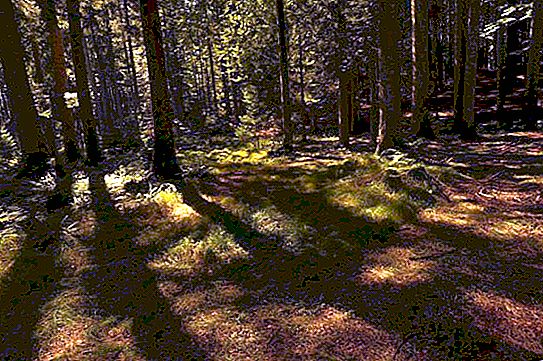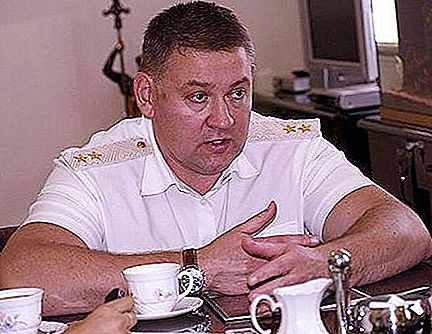The Ostrovsky Museum in Sochi is located in the house in which the writer lived his last years. Even during the life of Nikolai Alekseevich, the street on which he lived was named after the hero of his work - Pavel Korchagin. Today, there is a literary and memorial complex where visitors will learn a lot of interesting things about the work of various writers connected in one way or another with the Black Sea city.
Ostrovsky in Sochi
For the first time Nikolai Ostrovsky was in Sochi in 1928. A seriously ill, almost blinded writer felt so much better in this city that he decided to settle here. This opinion was shared by his relatives, who hoped with the help of spa treatment to alleviate his suffering.
For eight years, the family moved from one rental apartment to another, trying to create the most convenient conditions for an active writer. The first chapters of the novel How Steel Was Tempered began to be published in 1932 in the journal Young Guard. Work on the manuscript was completed in 1934.
A gift from the government to N. Ostrovsky
The work gained immense popularity, becoming the most published novel in the Soviet period. The name of its author, the prototype of Pavka Korchagin, became known to every Soviet person.
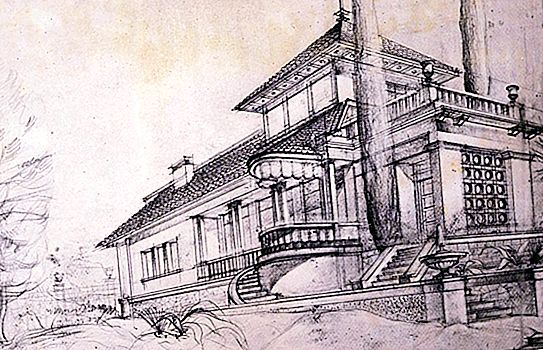
In 1935, at a meeting of the All-Russian Central Executive Committee, it was decided to build a house in Sochi for the writer Ostrovsky. The architect J. Kravchuk developed the project, and the writer’s mother chose the place for construction.
House on Pavel Korchagin Street
Nikolai Alekseevich wrote to friends about his new housing, that everything was done in such a way that he could work calmly and fruitfully: “I feel the caring hand of my homeland.”

And that was true. The architect created a modest, small house resembling a summer house. But at the same time, all the features of the life and work of the writer were taken into account. The building, which later became the Museum of Nikolai Ostrovsky in Sochi, was divided into two halves. One part was intended for the family, there lived the mother and sister of the writer. In the same half were the dining room, kitchen and hallway. The second part of the house is writing. It had a separate entrance and an entrance hall, an office, a secretary, a large open veranda and a room for the writer's wife on the second floor.
The atmosphere of the Ostrovsky Museum in Sochi
The special value of this museum is that it was created less than a year after the death of Nikolai Alekseevich. The family placed interior items, things, books, documents, photographs at the disposal of the employees — all that would help recreate the conditions in which the writer lived and worked. His friends also donated letters and photographs related to the name of Ostrovsky to the museum. By the joint efforts of museum workers and people close to the writer, the writer managed to maintain the atmosphere of this cozy house.
This was gratefully reported by visitors to the house-museum, leaving warm words addressed to the creators of an interesting exhibition in the review book. These walls hold meetings with people who are familiar with the details of the writer's biography, mark significant dates, and discuss literary works.
Residential half of the Ostrovsky house-museum in Sochi
The room of Olga Osipovna, the mother of Ostrovsky, is still ascetic and modest. There have always been many photographs of her children.
The room of the writer’s sister, Ekaterina Alekseevna, looks like an office. The main subject here is a desk, she was responsible for the extensive correspondence of Nikolai Alekseevich, she also became the first director of the opened Ostrovsky Museum in Sochi.
Half writer
The rooms in which N. Ostrovsky spent a lot of time were upholstered in dark wooden panels to create twilight in the rooms. From the bright light his eyes began to hurt. The secretary kept an archive. And in the office the writer spent most of his time. Here he worked, slept and ate. In 1936, he embarked on a new novel, Storm Born.
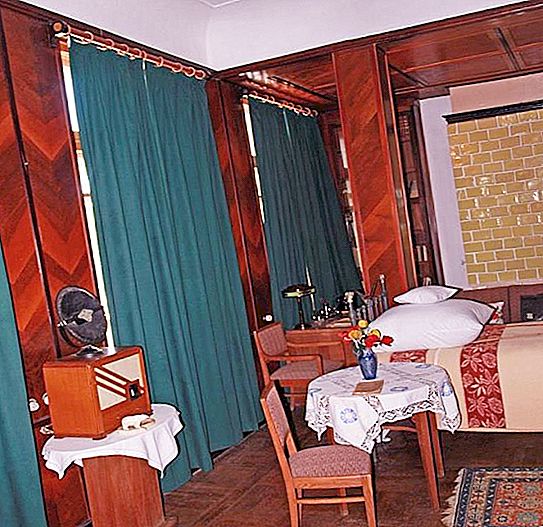
The architect provided a comfortable veranda on which the writer rested in the hot summer of 1936. He wrote to his friends that he spends a lot of time outdoors, cannot breathe, catches a warm, gentle breeze from the sea.
Nikolai Ostrovsky
The Ostrovsky Literary and Memorial Museum in Sochi is dedicated to a man who, during his lifetime, became a hero in the eyes of millions of Soviet people. The image of Pavka Korchagin is so closely intertwined with the writer that it is sometimes difficult to understand where the documentary presentation of events ends and artistic fiction begins. Having lost the ability to move, and later his eyesight, Nikolai Alekseevich did not allow fate to break himself. He found strength and will, overcoming physical suffering, to become a writer, to work until his last days.
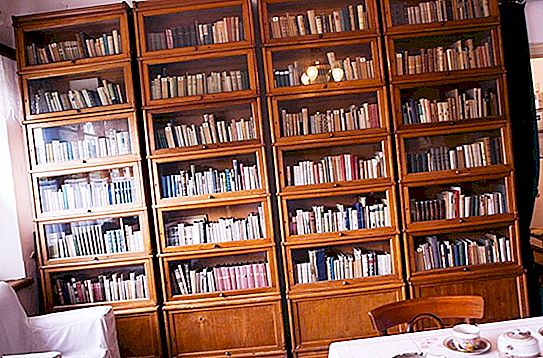
He was born in 1904 in Ukraine, where he spent his childhood and youth. The October Revolution fell on his teenage years, but from the first days Nicholas warmly took an active part in it. He fought for Soviet power with the counter-revolution, took part in the Civil War. After a serious wound, he suffered pneumonia and typhoid, which finally undermined his health. At the age of 19, the medical commission recognized him as a disabled person of the first group and made a decision: disabled.
And he continued an active life. He worked in the border regions of Ukraine, headed the Komsomol cell. Then there were hospitals and sanatoriums, until in 1928 he first arrived in Sochi by boat from Novorossiysk. They carried him to the pier on a stretcher, the writer could not walk.
The main novel of life
In Sochi, mother comes to Ostrovsky. The writer has an operation in Moscow, but it does not help. Blindness is added to joint disease, a consequence of shell shock in war. Now, communication with the world remains only through friends and radio headphones.
Having come up with a special stencil that allows him to maintain even lines, Ostrovsky begins to write the novel How Steel Was Tempered, describing his feelings, feelings, dreams and actions. At this time, he and his family were forced to move from apartment to apartment, looking for more comfortable conditions for a sick body.

In 1934, work on the novel was completed, the story went to print. Ostrovsky lived at that time on Orekhovaya Street, where thousands of letters from enthusiastic readers began to come with thanks and wishes for health. All this time, friends, coming to Sochi, visited the writer, maintaining constant contact with him.
Readers fell in love with the novel and its main character long before the author was presented with the highest award - the Order of Lenin. This day was a holiday for all fans of Ostrovsky.
The writer began writing a new work. In October 1936 he left for Moscow, where he became worse. December 22, the writer died. On May 1, 1937, the N. Ostrovsky Museum was opened in Sochi.


